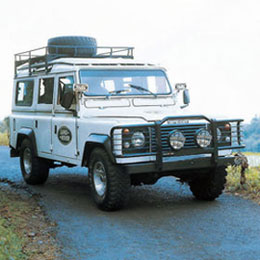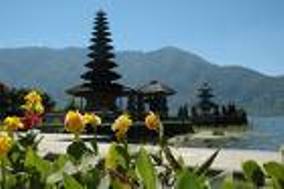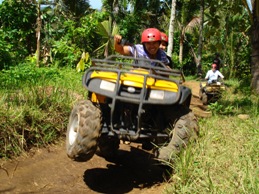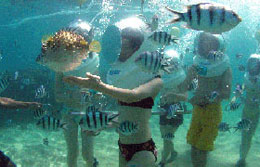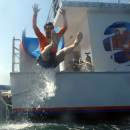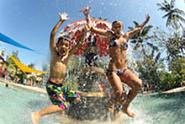
LOMBOK ISLAND
Lombok at The Glance
Lombok is an island in West Nusa Tenggara (Nusa Tenggara Barat or NTB) province, Indonesia. It forms part of the chain of the Lesser Sunda Islands, with the Lombok Strait separating it from Bali to the west and the Alas Strait between it and Sumbawa to the east. It is roughly circular, with a "tail" (Sekotong Peninsula) to the southwest, about 70 km across and a total area of about 4,725 km² (1,825 sq mi). The provincial capital and largest city on the island is Mataram. It is somewhat similar in size and density with neighboring Bali and shares some cultural heritage, but is administratively part of NTB along with sparsely populated Sumbawa. It is surrounded by a number of smaller islands locally called Gili Island. Lombok is under the administration of the Governor of the province of West Nusa Tenggara (Nusa Tenggara Barat). The province is administered from the provincial capital of Mataram in West Lombok.The island is home to some 3.16 million Indonesians as recorded in the decennial 2010 census, and in 4 regencies along with the provincial capital Mataram.
Just lies 25 minutes from its celebrated sister Island of Bali by flight Selaparang airport or 4 hours by public ferry from Padangbay harbor, Lombok has various attractions for those who are in search for a memorable holiday. In the northern coastline, the unspoilt beaches forested by thick palm trees dominate the landscape. Senggigi, the main tourist resort area in Lombok, for instance, is amazing and offers various range of accommodation categories, from non-star cottages to the international 5 star-rated ones such as Sheraton Senggigi Beach Resort, Senggigi Beach Hotel, Holiday Inn and many others. Three-small-island, better known as Gili Air, Gili Meno, and Gili Trawangan are also heaven for either beginner or professional divers. Their underwater beauties inspire a next vacation to Lombok.
Driving further north, you can experience a unique way of life of the Sasak indigenous who live in the simple traditional houses in the rustic village of Segenter. This mountain tribe compound is not built for tourists, but is open widely to tourist, though. So they are not commercial as many other tourist places through out the island.
For hard trekkers, the highest and holiest mountain for both Baliness and Sasakness, Mt. Rinjani (3.726 m), is a perfect choice to escape from complicated daily routine. 3 days 2 nights hiking to the summit is quite a bit tiring, but to enjoy the fascinating sunrise from the summit is worthwhile. Spending a night by the lake shore of Segara Anak is also enjoyable and unforgettable.
Lombok is also gains more popularity amongst the young surfers for its various surf breaks along the southern coast of Kuta Beach. Many hotels In Kuta Beach, therefore, provides and arrange surfing trip to the surfing point around.
Aside from the natural attractions above, Lombok is also well known by its fine handicraft and jewelry such as traditional woven fabric, pottery, furniture, and sea pearls. They are made in the best and finest quality by local people and that they can meet the export quality standard. This is also one of the reason why coming to Lombok. We can eventually assure you that you can absolutely experience more than we can tell. See you around in Lombok !
Little is known about the Lombok before the seventeenth century. Before this time it was made up of numerous competing and feuding petty states each of which were presided over by a Sasak 'prince'. This disunity was taken advantage of by the neighbouring Balinese who took control of western Lombok in the early seventeenth century. The Makassarese meanwhile invaded eastern Lombok from their colonies in neighbouring Sumbawa. The Dutch had first visited Lombok in 1674 and the Dutch East India Company concluded its first treaty with the Sasak Princess of Lombok. The Balinese had managed to take over the whole island by 1750, but Balinese infighting resulted in the island being split into four feuding Balinese kingdoms. In 1838, the Mataram kingdom brought its rivals under control.
Relations between the Sasak and Balinese in western Lombok were largely harmonious and intermarriage was common. In the island's east, however, relations were less cordial and the Balinese maintained control from garrisoned forts. While Sasak village government remained in place, the village head became little more than a tax collector for the Balinese. Villagers became a kind of serf and Sasak aristocracy lost much of its power and land holdings.
During one of the many Sasak peasant rebellions against the Balinese, Sasak chiefs sent envoys to the Dutch in Bali and invited them to rule Lombok. In June 1894, the governor general of the Dutch East Indies, Van der Wijck, signed a treaty with Sasak rebels in eastern Lombok. He sent a large army to Lombok and the Balinese raja capitulated to Dutch demands.(see Dutch intervention in Lombok) The younger princes however overruled the raja and attacked and routed the Dutch. The Dutch counterattacked overrunning Mataram and the raja surrendered. The entire island was annexed to the Netherlands East Indies in 1895. The Dutch ruled over Lombok's 500,000 people with a force of no more than 250 by cultivating the support of the Balinese and Sasak aristocracy. While the period was one of deprivation for the Sasak, they Dutch are remembered as liberators from Balinese hegemony.
During World War II a Japanese invasion force comprising elements of the 2nd Southern Expeditionary Fleet invaded and occupied the Lesser Sunda Islands, including the island of Lombok. They sailed from Soerabaja harbour at 09:00 hrs on 8 March 1942 and proceeded towards Lombok Island. On 9 May 1942 at 17:00 hrs the fleet sailed into port of Ampenan on Lombok Island. The Dutch defenders were soon defeated and the island occupied.
Following the cessation of hostilities the Japanese forces occupying Indonesia were withdrawn and Lombok returned temporarily to Dutch control. Following the subsequent Indonesian independence from the Dutch, the Balinese and Sasak aristocracy continued to dominate Lombok. In 1958, the island was incorporated into the province of West Nusa Tenggara with Mataram becoming the provincial capital. Mass killings of communists occurred across the island following the abortive coup attempt in Jakarta and Central Java. During President Suharto's New Order administration, Lombok experienced a degree of stability and development but not to the extent of the boom and wealth in Java and Bali. Crop failures led to famine in 1966 and food shortages in 1973. The national government's transmigration program moved a lot of people out of Lombok. The 1980s saw external developers and speculators instigate a nascent tourism boom although local's share of earnings was limited. Indonesia's political and economic crises of the late 1990s hit Lombok hard. In January 2000, riots broke out across Mataram with Christians and ethnic Chinese the main victims, with alleged agents provocateur from outside Lombok. Tourism slumped, but in recent years has seen a renewed growth.
The Lombok Strait lies to the immediate west of the island and this waterway marks the passage of the biogeographical division between the fauna of the Indomalayan ecozone and the distinctly different fauna of Australasia that is known as the Wallace Line, for Alfred Russel Wallace , who first remarked upon the distinction between these two major biogeographical regions and how abrupt the boundary was between the two biomes.
To the east of Lombok lies the Alas Strait, a narrow body of water separating the island of Lombok from the nearby island of Sumbawa to the east.
The island's topography is dominated by the centrally-located stratovolcano Mount Rinjani, which rises to 3,726 m (12,224 ft), making the second highest volcano in Indonesia and the nation's third-highest mountain. The most recent eruption of Rinjani was in May, 2010 at Gunung Barujari. Ash was reported as rising up to two km into the atmosphere from the Barujari cone in Rinjani's caldera lake of Segara Anak. Lava flowed into the caldera lake, pushing its temperature up and crops on the slopes of Rinjani were damaged by ash fall. The volcano, and its crater lake, 'Segara Anak' (child of the sea), are protected by the Gunung Rinjani National Park established in 1997.
The highlands of Lombok are forest clad and mostly undeveloped. The lowlands are highly cultivated. Rice, soybeans, coffee, tobacco, cotton, cinnamon, cacao, cloves, cassava, corn, coconuts, copra, bananas and vanilla are the major crops grown in the fertile soils of the island. The southern part of the island is fertile but drier, especially toward the southern coastline.
The water supply in Lombok is stressed and this places strain upon both the water supply of the provincial capital, Mataram, and the island in general. The southern and central areas are reported to be the most critically affected. West Nusa Tenggara province in general is threatened with a water crisis caused by increasing forest and water table damage and degradation. 160 thousand hectares of a total of 1960 thousand hectares are thought to have been affected. The Head of Built Environment and Security Forest Service Forest West Nusa Tenggara Andi Pramari stated in Mataram on Wednesday, May 6, 2009 that, "If this situation is not addressed it can be expected that within five years it may be difficult for people to obtain water in this part of NTB (West Nusa Tenggara). Not only that, the productivity of agriculture in value added will fall, and the residents are experiencing water deficiency in their wells". High cases of timber theft in the region of NTB are contributing to this problem. In September 2010, Central Lombok some villagers were reported to be walking for several hours to fetch a single pail of water. Nieleando, a small coastal village about 50 kilometers from the provincial capital, Mataram, has seen dry wells for years. It has been reported that occasionally the problem escalates sufficiently for disputes and fighting between villagers to occur. The problems have been reported to be most pronounced in the sub-districts of Jonggat, Janapria, Praya Timur, Praya Barat, Praya Barat Daya and Pujut. In 2010 all six sub-districts were declared drought areas by provincial authorities.Sumbawa, the other main island of the province, also experienced severe drought in 2010, making it a province-wide issue.
Best Recommended Adventures |
||||
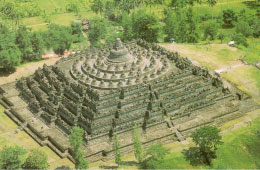 Jogjakarta |
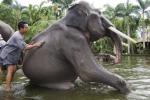 Elephant Ride |
|||
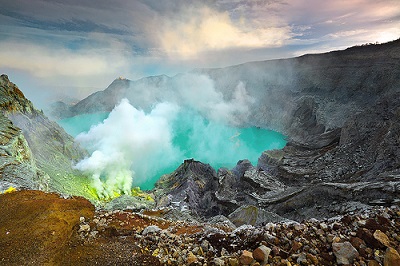 Ijen Crater |
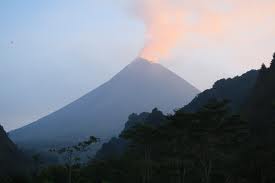 Mount Merapi |
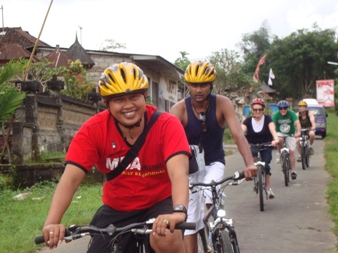 Bali Cycling |
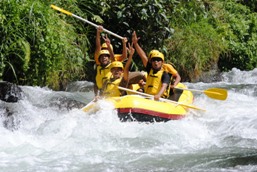 Bali Rafting |
|
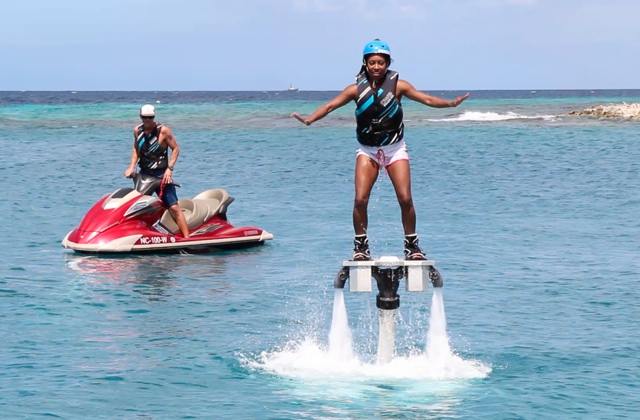 Fly Board |
||||









